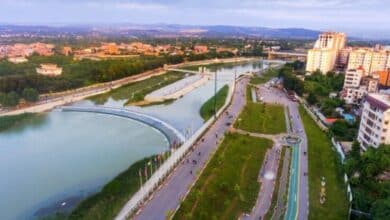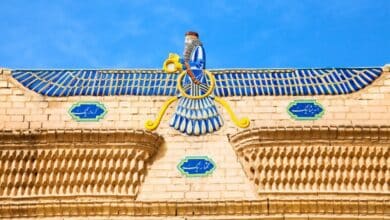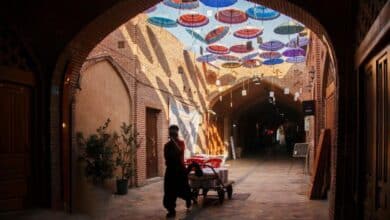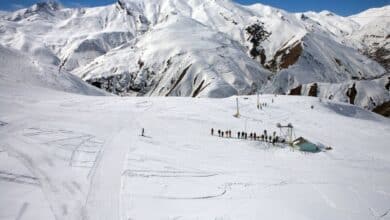Exploring Yazd: Magnificent Ancient City Journey
Understand the history of this ancient desert city
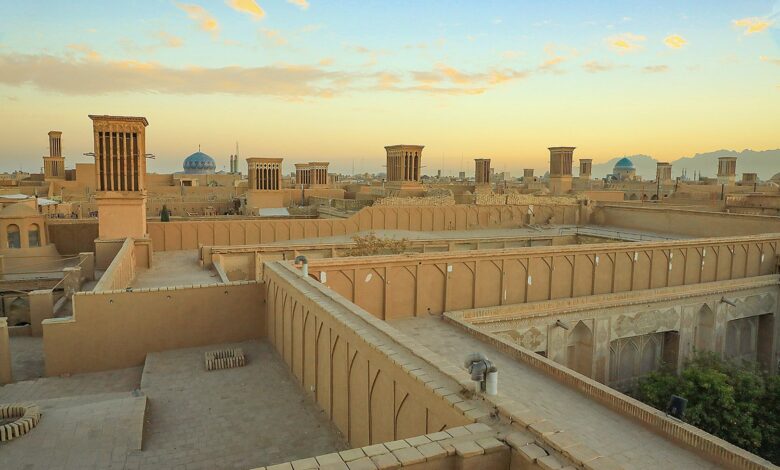
Yazd is an ancient desert city located in the center of Iran. Once located along the famous Silk Road trading route, Yazd is considered the second oldest historical city in the world after Venice, Italy.
Yazd remains one of the oldest continually inhabited towns in Iran. It’s also a UNESCO World Heritage Site.
For first-time visitors, Yazd provides a portal into another world. This desert city has preserved many ancient traditions and customs.
Exploring Yazd is like taking a journey back in time. Discover why this intriguing destination is a must-see on any trip to Iran.
Contents
Top Sites to Explore in Yazd City
As one of Iran’s oldest cities, Yazd packs in centuries of history. Wandering through the Old City reveals many architectural and cultural gems. Don’t miss these top sites:
Amir Chakhmaq Complex
This stunning religious complex is Yazd’s most famous landmark, which centers on a tranquil courtyard and domed mosque. The ornate three-story Tekyeh pavilion features mirrored alcoves and tilework.

Towering above is the grand entrance of the Seyed Rokneddin Mausoleum, with intricate brickwork and minarets. The structures’ exquisite details provide picturesque views.
Orienttrips Experience
Book Daily Yazd Tour
Masjid-e-Jameh Mosque
This beautifully-tiled mosque dates back over 90 years. Built in simple Persian style, its trademark features are the tallest minarets in Yazd, reaching almost 53 meters high.
Inside, stunning mosaics of deep blue tilework adorn the mihrab, dome, and exterior facade, creating a dazzling display.
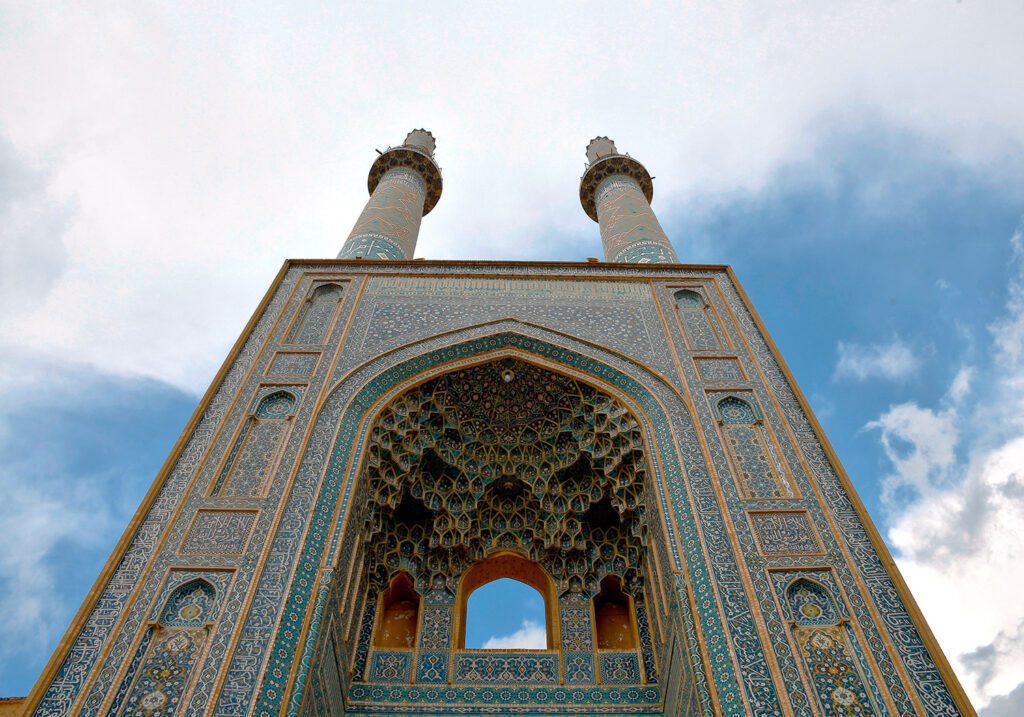
Still an active place of worship, the mosque can accommodate up to 2,000 people. Its perfectly proportioned pillars, soaring arches, and intricate details exemplify ancient Islamic architecture.
Dowlat Abad Garden
Another captivating and scenic site in Yazd is known as Dowlat Abad Garden. This historic garden has a joyful and unique atmosphere, especially if you visit at night.
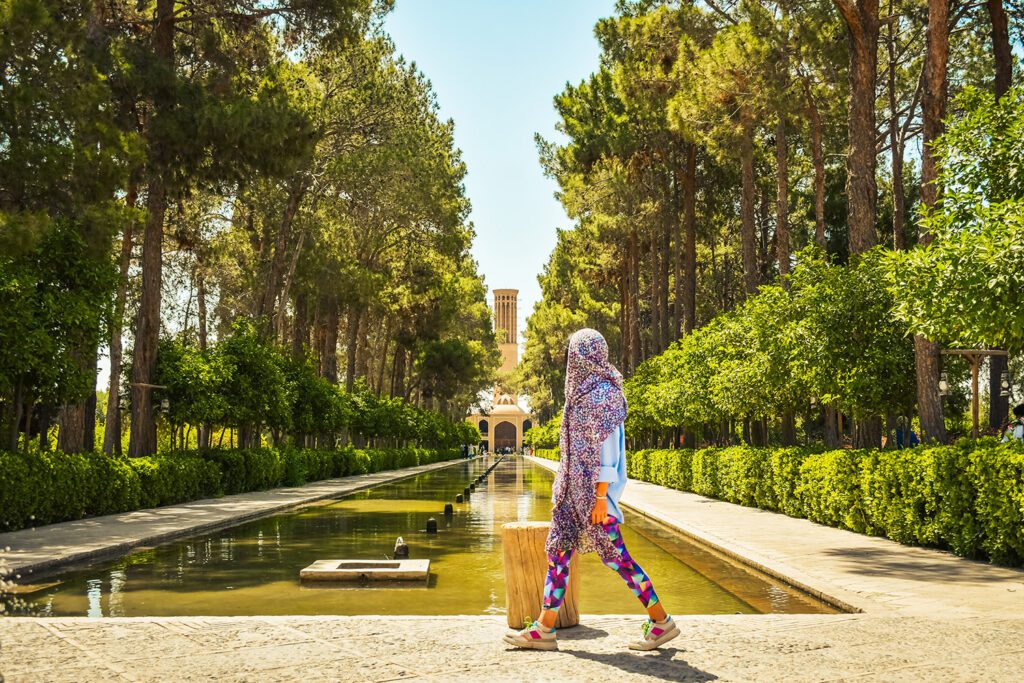
Dowlat Abad Garden welcomes guests in the evening with a fragrant, cool breeze. During the hot summer months, when temperatures in Yazd climb dramatically during the day, visiting the garden at night would be a pleasant experience that you are sure to enjoy.
Zoroastrian Fire Temple
The Yazd Zoroastrian Fire Temple, also known as Varharam, is another attraction in Yazd. Its holy fire is estimated to be over 1500 years old. This holy fire temple was built during the first Pahlavi dynasty, and its ancient eternal flame intrigues visitors with its long history.
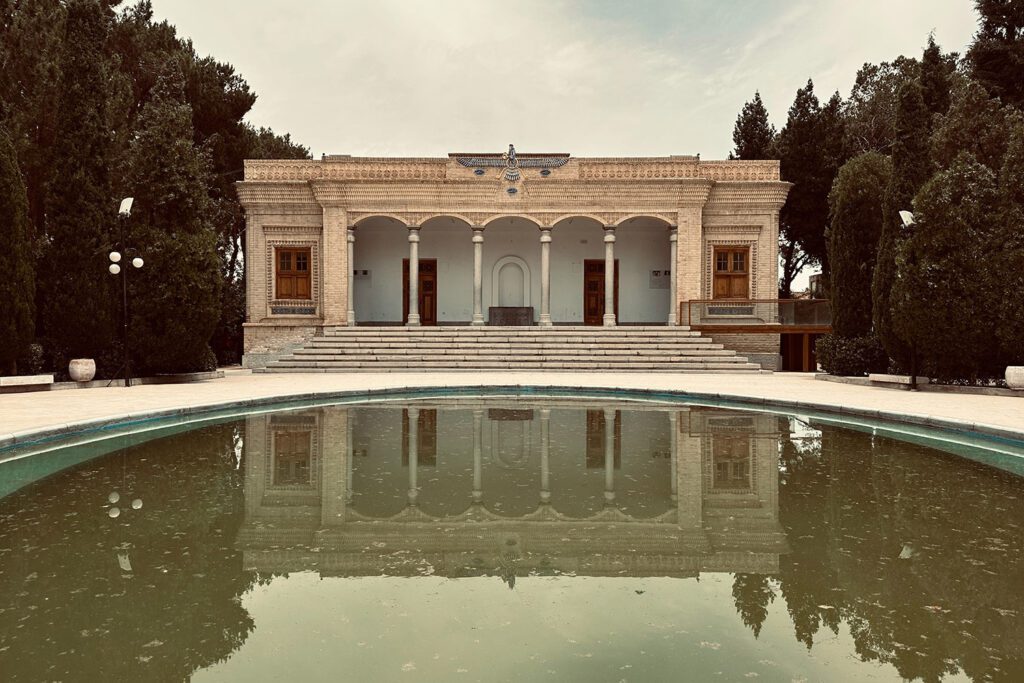
Towers of Silence
The Towers of Silence, also known as dakhmas, are structures where Zoroastrians used to lay their dead to be consumed by birds and beasts.
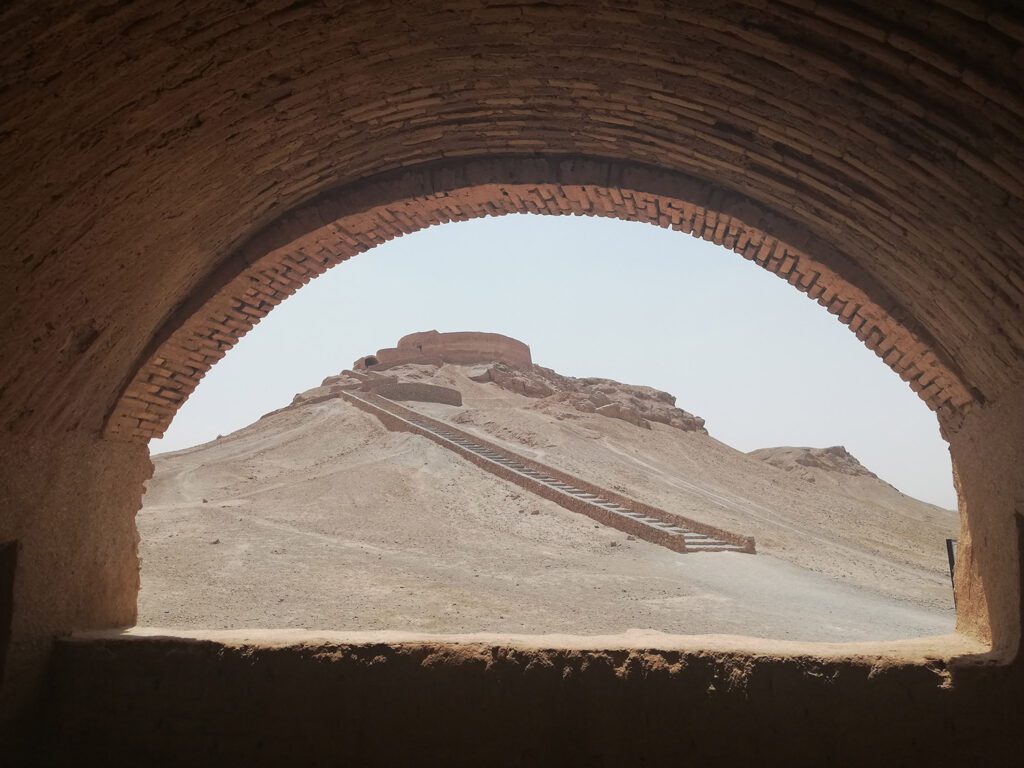
The towers were built with raw bricks and plaster to prevent contaminating the earth.
Yazd Water Museum
Yazd’s Water Museum is located in the historic Kola-Dozz House from the Qajar era. It contains valuable artifacts and information about past water engineering.
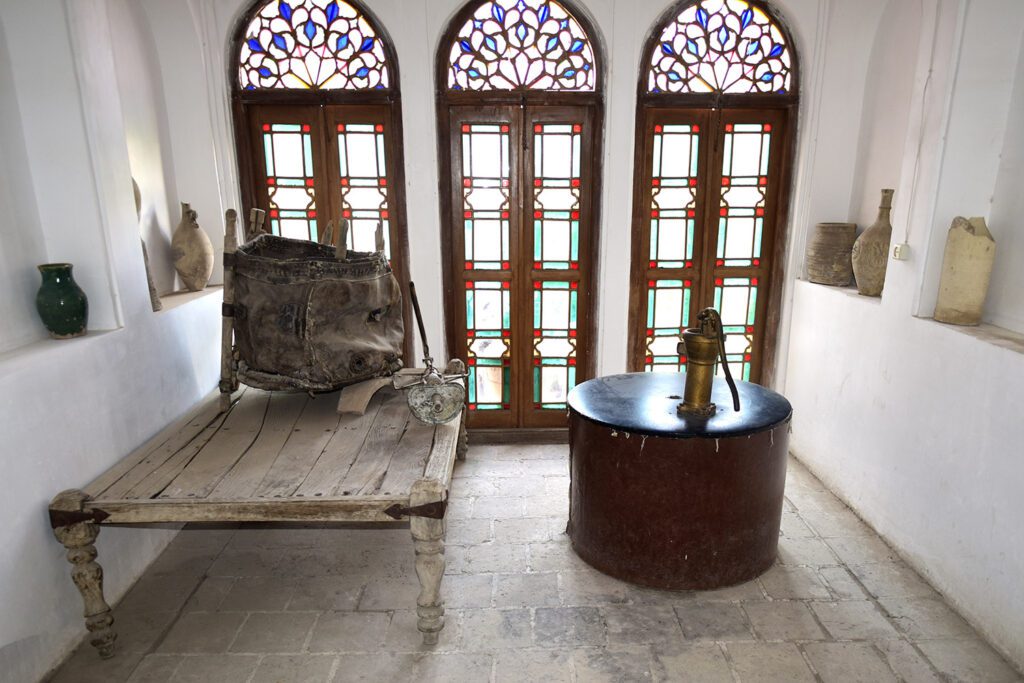
Visiting this museum provides an excellent opportunity to learn about Iran’s thousands of years of water management history. A centuries-old qanat flowing through the museum building makes it an exciting and noteworthy destination.
Lari House
Lari House exemplifies magnificent Qajar-era architecture and belonged to one of the prominent families of the time, Haj Mohammad Ibrahim Lari.
It is located in the Fahadan neighborhood. After visiting Lari House, tourists can also see other Yazd attractions nearby, like Alexander Prison and the Twelve Imam Tomb.
Spanning over 1,700 square meters, this grand house has six sections, three courtyards, multiple windcatchers, and verandas.
Alexander’s Prison
Alexander’s Prison, also known as Ziayieh School, is another attraction in Yazd that greatly interests tourists and enthusiasts of art history and architecture. This structure dates back to the 7th and 8th centuries and was built using raw mud bricks without any other materials.
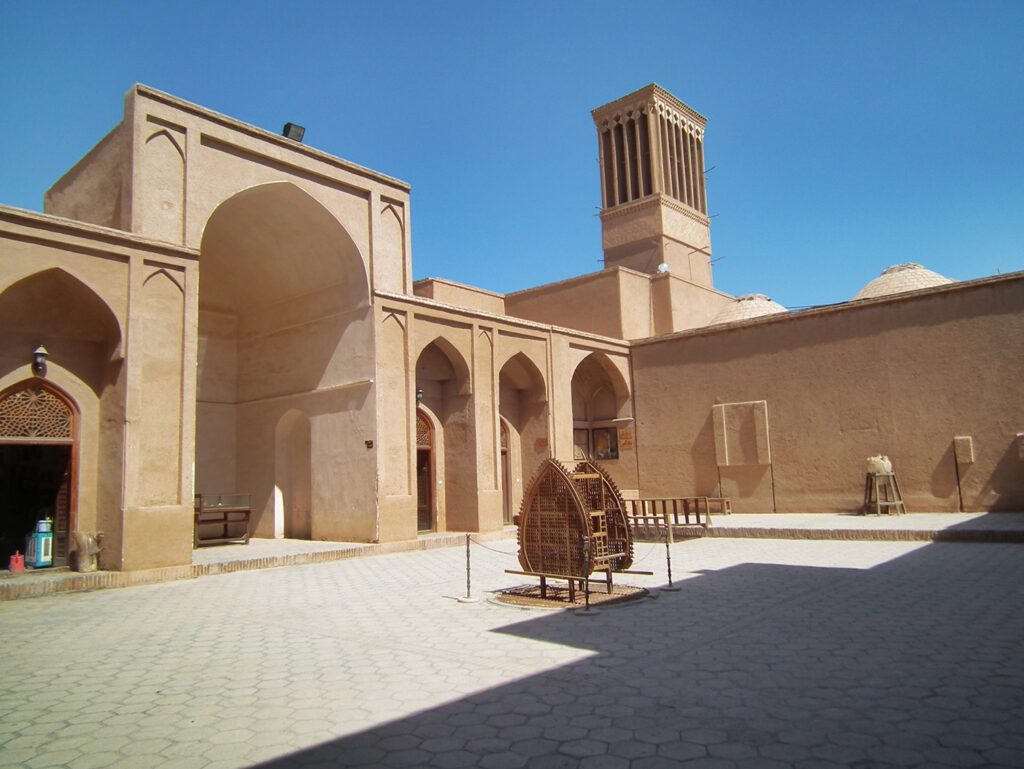
Sa’at Square (Yazd Clock Tower)
Clock towers exist in many cities worldwide, but the Yazd Clock Tower is the first clock tower built in Iran during the Qajar era. The structure of the clock tower is a rectangular brick base with four large white clock faces on each side.
What makes this monument unique compared to similar ones is its beautiful architecture accompanied by ornate tile work. This cultural attraction can be found in Imam Square of the city.
Windcatchers
You’ve likely heard that Yazd is known as the “city of windcatchers.” These structures save people from the intolerable heat through architectural ingenuity.

The Six Windcatchers Cistern is considered the most beautiful cistern in Yazd, distinguishable by its six windcatchers. This building dates to the Qajar era.
Qanat System
A network of underground aqueducts called qanats has supplied Yazd with water for thousands of years by tapping into mountain runoff. They exemplify ancient Persian engineering innovations.

Khan Complex
Khan Complex is another top tourist attraction in Yazd, consisting of Khan Bathhouse, Khan Bazaar, Khan Square, and Khan School. This complex was built during the Qajar era.
Today, the Khan Bathhouse has been repurposed as a restaurant. With a length of 274 meters and 4 to 6 meters in height, Khan Bazaar is the longest bazaar in Yazd.
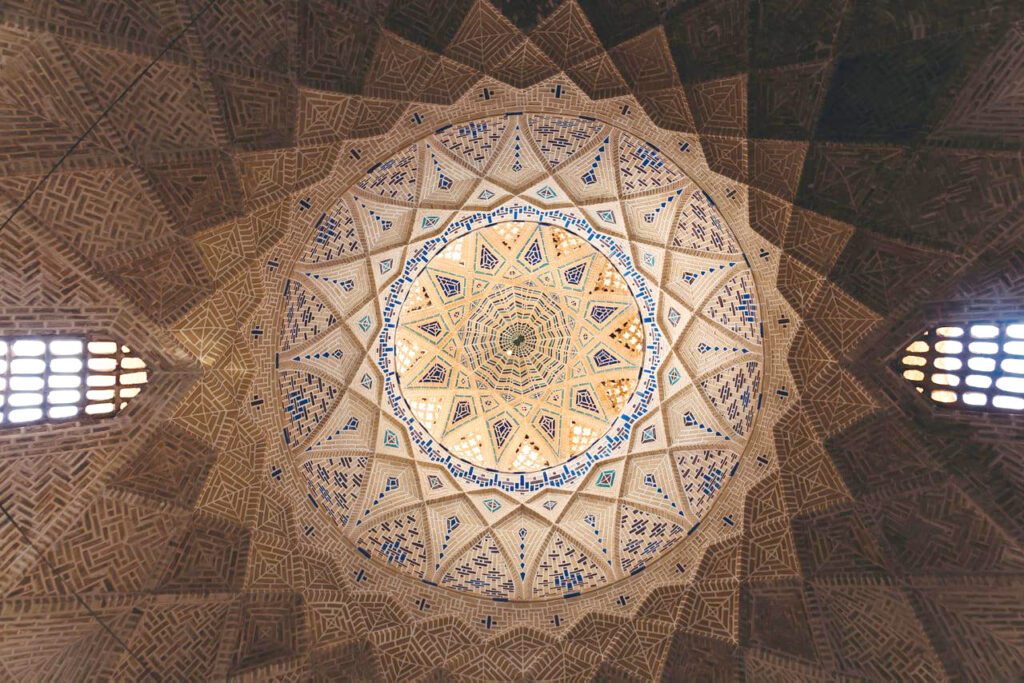
Evidence shows the gradual construction of the various sections of Khan Bazaar over time.
Abu ol Muali Bath
Abu ol Muali Bath is now a restaurant but was an active public bathhouse used by Yazd residents until 40 years ago. The bath was built from brick, plaster, gravel, and sarooj and contains sections like the entrance, octagonal hall, stairway, hot and cold water pools, resting room, storage, private room, and hot room.
The Mirror & Lighting Museum
The Mirror & Lighting Museum, also called Mirror Palace Museum, was built during the first Pahlavi era. Situated like a pavilion amidst a garden, it has a vast courtyard, pond, rooms decorated with plasterwork and mirror mosaics, interleaving hallways, and a pond house. Aside from the compelling architecture, the museum also contains valuable artifacts like weapons, coins, locks, stamps, manuscripts, and Luristan bronzes.
The Ideal Time to Visit Yazd
Yazd experiences extremely hot summers and cold winters due to its desert climate. Autumn and Spring (September to November – March to May) are ideal times to visit Yazd.
Temperatures in Yazd often exceed 40°C (104°F) during the summer. Winters are cold but dry, with average lows around freezing. During the hottest and coldest months, tourist numbers drop. But hotel prices are lower.
Top Tips for Visiting Yazd
Follow these tips to make the most of your time in Yazd:
- Rise early to explore before the midday heat.
- Wear breathable fabrics like cotton and linen.
- Bring sun protection like hats and sunglasses.
- Drink plenty of water to stay hydrated.
- Eat at local restaurants for authentic cuisine.
- Visit confectionery shops to sample Yazd’s famed sweets.
- Respect customs by dressing modestly and avoiding public displays of affection.
Final Words
A visit to the historical city of Yazd offers the chance to step back through the centuries and immerse yourself in ancient Persian culture. From Zoroastrian fire temples to the atmospheric Old City bazaars, Yazd provides endless opportunities to explore and learn.
Let the windswept desert oasis transport you to another time and place on your journey through Iran’s intriguing past. Yazd’s ancient charms are waiting!
